Ford Bronco Vs Jeep Wrangler

When the shit hits the fan, and you gotta grab your bug-out bag, arsenal, and ammo cans…. what are you going to throw all of that into? Me personally, I would typically prefer a 4-door truck with a bed. However, these days, these Jeeps and Broncos are being modified to the max and tricked out for apocalyptic performance. I could definitely see my opinion of a survival vehicle being altered with these latest models. In this article, I’m gonna share some stuff I know, because that’s what I do! I know stuff, I share stuff, and I do stuff. So let’s get to do’n stuff!
Bronco Or Jeep – What’s the Right Choice?
If you want to buy an off-road vehicle, the Jeep Wrangler and Ford Bronco are some of the top options on the market. It’s very important to understand the pros and cons between these two vehicles, as it will give you an understanding of which one is right for you.
Engine Types
These are both coming with a V6 or a turbocharged inline four. The Wrangler’s engine is a Pentastar 3.6 liter V6, it has 285 HP and around 260 lb ft of torque. Bronco has a 2.3 liter inline four that can do 210 lb ft of torque and 270 HP. There are optional engines that can bring you more HP and torque, there are around 4 lower trims and 3 top level trims for the Bronco. The Wrangler has a 2.0 liter four that delivers less HP but more torque at around 295 lb ft. Jeep is bringing the even more powerful Wrangler 392, so the potential delivered here is very good.

Drivetrain
You can find a common ground here, since both of them use Dana supplied units. With that being said, based on the trim level you can find multiple electronic locking differentials in the case of both ends. Bronco has 4 final drive ratios. In the case of Jeep’s Wrangler, you have the 3.45:1 standard gears, but other options are a little better. One thing to note is that Bronco doesn’t have the limited slip differential, which is optional for the Wrangler. That being said, the Bronco has 2 transfer cases, and the Wrangler has 3.
Suspension
Jeep relies on a damper configuration and coil spring, whereas the Bronco comes with a coil over damper approach. That being said, Ford has an unequal length set of control arms. If you go for the more hardcore configuration, it’s important to note that both cars come with a front antiroll bar disconnect. It’s also important to keep in mind that the Wrangler comes with a great electronic actuator, whereas the Bronco has its own hydraulically controlled bar. Right now, Jeep doesn’t come with an advanced shock package, but it’s still a great option. The major difference is that the Jeep has straight axles, and the Bronco has independent suspension.
Transmission
Bronco comes with a 7-speed manual here, which is very impressive. The gearbox is very interesting and powerful, and in both cases you can have the gearbox only with the base engine. With that being said, Fort has improved the double-digit gearbox since it was provided, which is really interesting in its own right.
Tires and wheels
Bronco comes with 5 tire models, 3 diameters and 3 wheel sizes. Jeep has a similar approach, they even have a muddy terrain option, but the best one is the Sasquatch package that has a 35-inch tire.

Pricing
A 2-door Bronco will cost you $29995. On the other hand, the Wrangler Sport is just a few hundred more. If you want a 4-door Bronco, it will cost you $34695, which is around $1405 more when compared to the Unlimited Wrangler. Don’t forget to leave some money in your budget for all the upcoming off-road bronco parts if you decide on Ford! Having said that, there’s loads of Wrangler JL Accessories already flooding the market to choose from.
Conclusion
Both cars are amazing, they come with great features, and you will be amazed with their quality and value for money. In some cases, the Wrangler is a little better, but we found the Bronco to be just as interesting and appealing. All you have to do is to check both of them out, pick the right trim based on your needs, and you will have an amazing experience!
Learn The Basics Of Outdoor Survival
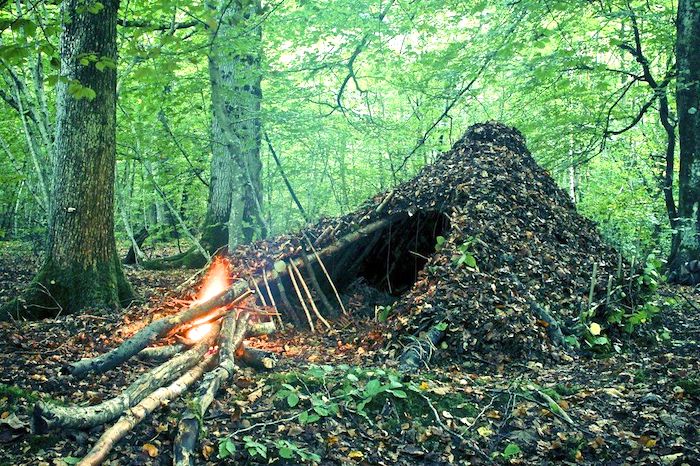
There are some techniques that survivalists use every day to help them survive. They have learned what works and what doesn’t. In this article, you will learn some of these survival tips which can be applied in a survival situation. It would be best to always remember that survival is very individualistic, so one person’s idea of survival may not work for another person.
Things To Consider When Stranded
When survival is concerned, you should know that survival is not just about survival. It’s also about survival with comfort. Therefore, proper planning and preparation are definitely needed to be adequately prepared for survival situations. Having the appropriate knowledge of survival and being able to use this knowledge appropriately will help your chances of having a successful survival experience.
Learn How To Make A Shelter Out Of Wood
The most essential survival item that you can have is knowledge. Knowing how and what to do in survival situations will give you the confidence needed to keep going when things seem bleak. Knowing about survival at home and knowing survival outdoors are two totally different situations, so planning for both scenarios will allow you to be more prepared for any situation. Learning how to cut trees and prepare a shelter are important. When cutting down a tree, the survivalist will need to select a tree that is free of branches and sticks. Dead-standing trees are best because they are stronger and straight. If the survivalist cannot cut the tree down in one shot with an ax or hatchet, he should start by taking off some small branches that can be used as a fire starter while saving the larger pieces for the shelter.
How To Start A Fire
There are many different ways to ignite a survival flame, and one of the best survival fire starter materials is tinder fungus. It has been used for hundreds of years by survivalists because it burns slowly in addition to being flammable. The only problem with this survival fire starter is that you cannot make it out in the wilderness. Instead, it would be best if you used simple survival techniques to ignite a flame. Survival water filters are survival fire starter materials that can be used for drinking. You should have this survival tool with you at all times if you are trying to survive in the wilderness, even though it takes some effort because of how much work you must put into survival situations. See the survival fire starter section for more information on these survival tools.
How To Filter Water For Drinking
You can not drink directly out of a lake or river, so you must either treat the water, filter it, or boil it before using it. You can make a survival water filter using a survival length of tubing, bucket, and sand.
Survival tip: If you have space, pack your survival length of tubing with your survival kit as well. To use this survival tool to get safe drinking water out of an impure source such as a lake or river, just follow the instructions that came with your device.
Surviving The Elements
Being stranded outdoors requires intelligent and actionable decision-making. If you plan to survive the elements, you will need to think quickly on your feet and take action immediately when opportunities present themselves.
Good luck out there!
How to Hunt Turkey for Survivalists
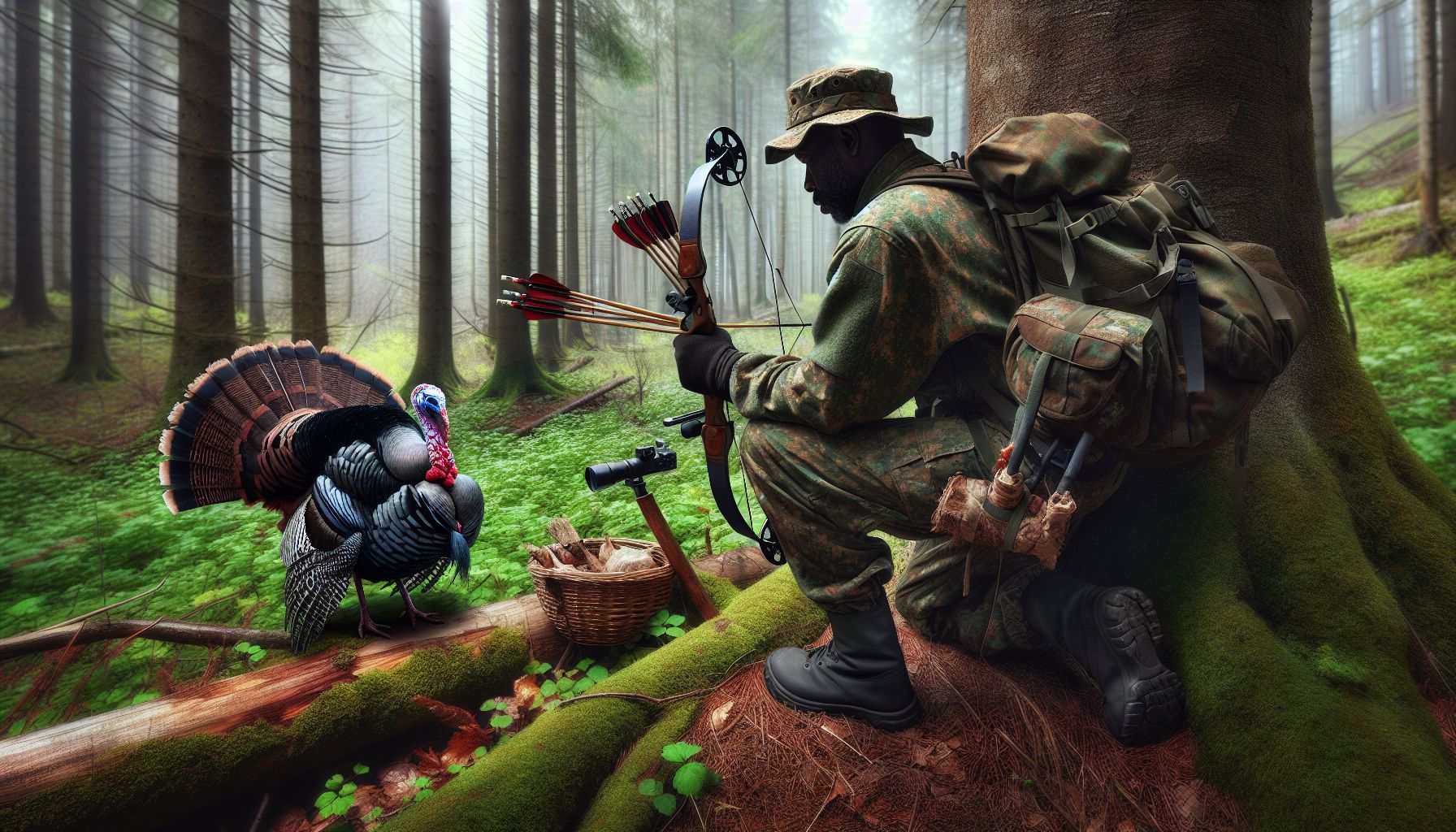
Turkey hunting can be a challenging yet rewarding experience for survivalists looking to provide food for themselves in the wilderness. Turkeys are a great source of protein and can be found in various habitats across North America. In this article, we will discuss some tips and techniques for hunting turkeys in a survivalist situation.
Before the Hunt
Before heading out to hunt turkeys, it is important to be prepared. Make sure you have the necessary hunting gear, including a reliable weapon such as a shotgun or bow, camouflage clothing, hunting boots, and calls to attract turkeys. It is also essential to check the hunting regulations in the area you plan to hunt, as well as obtaining any necessary permits.
Choosing the Right Spot
When scouting for turkeys, look for areas with good cover, roosting sites, and food sources. Turkeys are known to frequent oak ridges, grassy fields, and open woodlands. Set up your hunting spot near these areas, making sure to remain hidden and undetected by the birds.
Using Calls
Using turkey calls is crucial for attracting turkeys to your location. There are various types of calls, including box calls, slate calls, and diaphragm calls. Practice using these calls before heading out into the field, as realistic turkey sounds can make all the difference in luring in your prey.
Patience is Key
Hunting turkeys requires patience and persistence. Turkeys have excellent eyesight and can easily detect movement. Stay still and alert while waiting for turkeys to approach. Use decoys to add realism to your setup and attract curious turkeys.
Shot Placement
When it comes time to take the shot, aim for vital organs such as the head or neck for a clean, quick kill. Turkeys have thick feathers that can deflect shots, so it is important to aim carefully and shoot at close range for maximum effectiveness.
The Harvest
After successfully harvesting a turkey, it is essential to process the bird properly to ensure the meat stays fresh. Remove the feathers, gut the bird, and store the meat in a cool place. Turkey meat can be cooked and eaten in various ways, providing a valuable source of protein for survivalists in the wilderness.
Safety Tips
Hunting wild animals comes with inherent risks, so it is essential to practice safety at all times. Always be aware of your surroundings and know where other hunters may be located. Wear blaze orange clothing to increase visibility and avoid accidents. Additionally, never point your weapon at anything you do not intend to shoot.
Conclusion
Hunting turkey for survival can be a challenging yet rewarding experience for those willing to put in the time and effort. By following these tips and techniques, survivalists can increase their chances of successfully harvesting a turkey for food in the wilderness. Remember to stay patient, use calls effectively, practice shot placement, and prioritize safety at all times. Happy hunting!
Building a Shelter in the Woods for Hikers
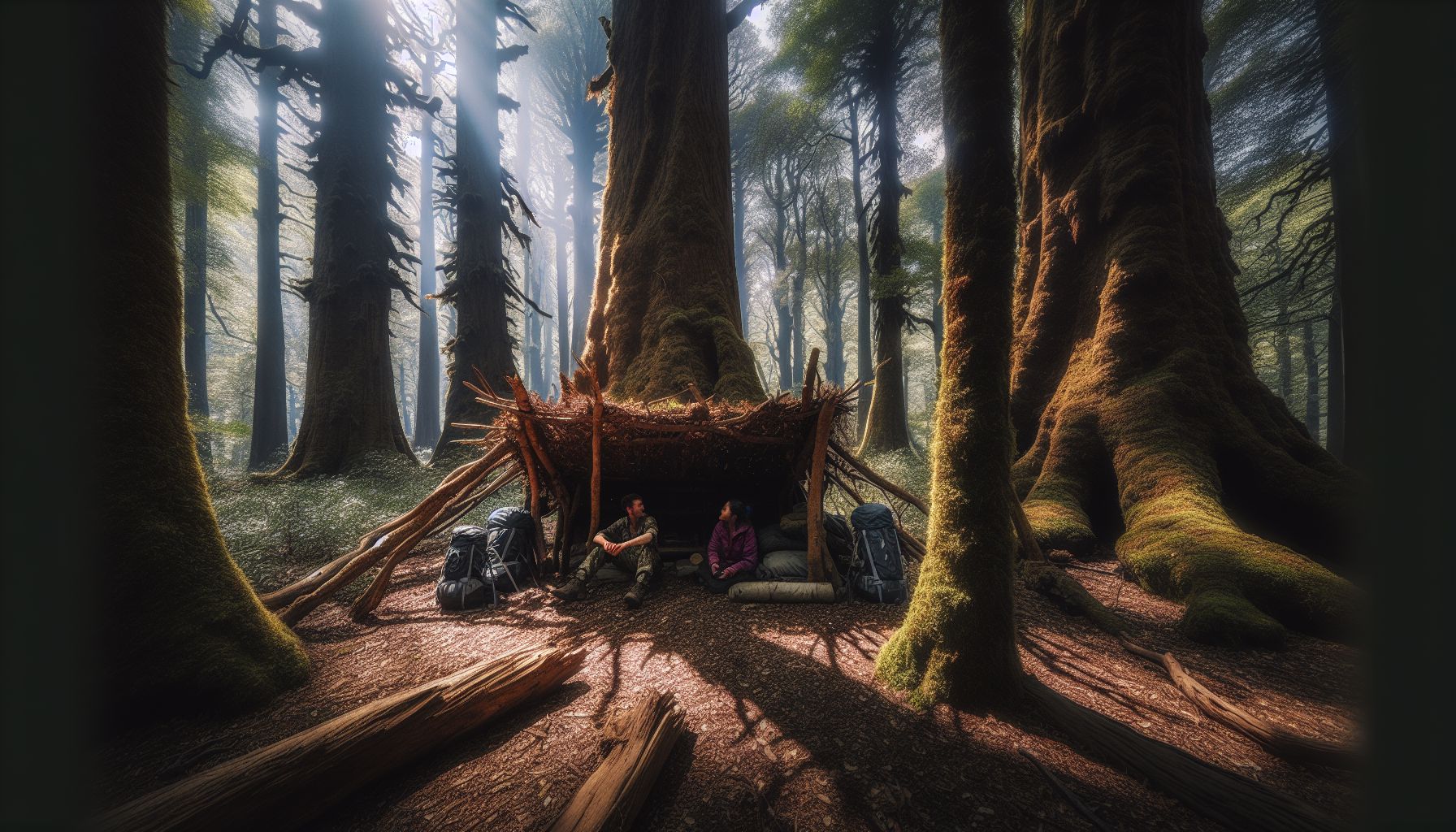
When embarking on a hike through the wilderness, it is important to be prepared for any unexpected twists and turns that may come your way. One of the most vital skills any hiker can possess is knowing how to build a shelter in the woods. Whether you are caught in a sudden downpour or need a place to rest for the night, having the ability to construct a shelter can mean the difference between a thrilling adventure and a potential disaster.
Finding the Right Location
The first step in building a shelter in the woods is finding the perfect location. Look for a spot that is flat and free from any debris or potential hazards. Avoid setting up your shelter near water sources, as this can attract unwanted wildlife. Instead, opt for a location that is easily accessible but provides enough coverage from the elements.
Choosing the Right Materials
Once you have found the ideal location, it is time to gather materials for your shelter. Look for sturdy branches, leaves, and vines that can be used to construct a sturdy frame. If you are near a river or stream, consider using rocks to help anchor your shelter in place. Remember, the goal is to create a shelter that is sturdy enough to withstand the elements, so take your time collecting materials and ensure they are strong enough to hold up.
Building the Shelter
Now that you have found the right location and gathered your materials, it is time to start building your shelter. Begin by creating a frame using the branches you collected, making sure to secure them in place with vines or rope. Once the frame is in place, cover it with leaves and branches to create a roof that will protect you from rain and wind. Take your time with this step, as a well-built shelter can make all the difference in a survival situation.
Adding Final Touches
To make your shelter even more comfortable, consider adding some final touches. If you have a tarp or emergency blanket, use it to line the inside of your shelter for added protection from the elements. Creating a raised bed using leaves or branches can also help keep you off the ground and warmer throughout the night. Remember, the more effort you put into building your shelter, the more comfortable and secure you will be.
Thrill Seeking and Wildlife Awareness
While building a shelter in the woods can be an exciting challenge, it is important to remember that you are in the territory of wild animals. Be sure to make noise while gathering materials to alert any nearby wildlife of your presence. Additionally, consider starting a small fire near your shelter to keep potential predators at bay. Remember, it is always better to be safe than sorry when it comes to wildlife encounters in the wilderness.
Conclusion
Building a shelter in the woods for hikers can be a rewarding and thrilling experience. By following these steps and taking the time to construct a sturdy and secure shelter, you can ensure that you are prepared for any unexpected situations that may arise during your hike. Remember to always prioritize safety and take the necessary precautions to protect yourself from the elements and wildlife. With the right skills and mindset, you can turn any hike into an unforgettable adventure.
Building a Shelter in the Woods: A Guide for Adventure Seekers
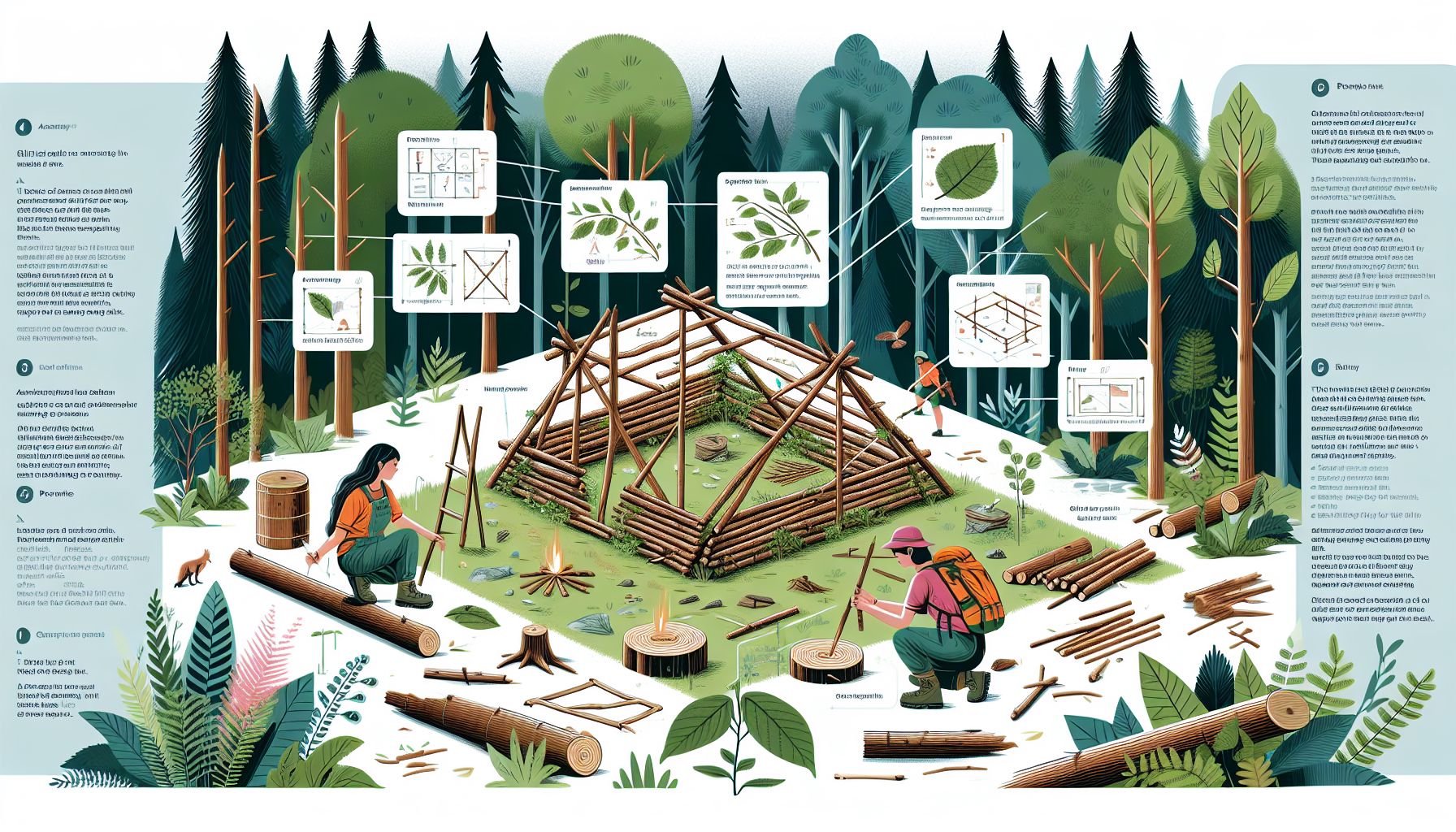
As an avid hiker and outdoor enthusiast, there’s nothing quite like the thrill of heading into the woods for a weekend of adventure. Whether you’re hiking through rugged terrain or hunting wild animals, there’s a certain magic to immersing yourself in nature. But what do you do when the sun begins to set and you need a place to rest your weary head? That’s where building a shelter in the woods comes in handy.
The Importance of Shelter
Before we dive into the nitty-gritty of building a shelter, let’s talk about why it’s so important. When you’re out in the wilderness, having a shelter provides protection from the elements, keeps you warm and dry, and gives you a sense of security. Plus, there’s a certain satisfaction that comes from knowing you built your own temporary home with nothing but your hands and the resources around you.
Finding the Perfect Spot
The first step in building a shelter is finding the perfect spot. Look for a flat area that’s not too close to water (to avoid flooding) and has plenty of natural resources nearby. Keep an eye out for sturdy trees that can be used as the foundation for your shelter, and make sure to clear away any debris or obstacles in the area.
Collecting Materials
Once you’ve found the perfect spot, it’s time to start collecting materials. Look for branches, leaves, and other natural resources that can be used to build your shelter. Remember, the goal is to create a structure that will protect you from the elements, so make sure to gather enough materials to create a solid and sturdy shelter.
Building Your Shelter
Now comes the fun part: building your shelter. Start by creating a frame using sturdy tree branches as the support beams. Lean these branches against a tree or stack them together to create a basic structure. Then, layer smaller branches, leaves, and other debris on top to create a roof. Make sure to pack the materials tightly together to create a barrier against wind and rain.
Adding the Finishing Touches
With your basic structure in place, it’s time to add the finishing touches to your shelter. Consider adding a layer of leaves or branches on the floor to create a comfortable sleeping area. If you have a tarp or emergency blanket, consider using it as an additional layer of protection against the elements. And don’t forget to gather firewood and create a fire pit outside your shelter for warmth and cooking.
Enjoying Your Shelter
Once your shelter is built, take a moment to admire your handiwork. Sit back, relax, and enjoy the sounds of nature around you. Whether you’re planning on spending the night or just taking a break from hiking, having a shelter in the woods can enhance your outdoor experience and give you a greater sense of connection to the wilderness.
In conclusion, building a shelter in the woods is a valuable skill for any adventure seeker. It provides protection, warmth, and a sense of accomplishment that can enhance your outdoor experience. So next time you’re out in the wilderness, consider taking the time to build your own shelter and see how it can elevate your adventure to the next level.
Surviving in the Wild: Essential Tips for Adventure Seekers

Are you an adventure seeker looking to test your survival skills in the wilderness? Whether you are planning a solo trek through the forest or embarking on a camping trip with friends, knowing how to survive in the wild is crucial. From finding shelter to sourcing food and water, here are some essential tips to help you navigate the great outdoors and come out unscathed.
Finding Shelter
In a survival situation, finding shelter should be your top priority. Shelter not only protects you from the elements but also helps regulate body temperature and conserve energy. Look for natural shelters such as caves, overhangs, or fallen trees. If these options are not available, build a shelter using branches, leaves, and other natural materials. A sturdy shelter will keep you safe and dry, giving you a much-needed respite from the harsh wilderness.
Sourcing Food and Water
Food and water are essential for survival, but they can be scarce in the wild. Knowing how to forage for edible plants and identify safe water sources is crucial. Look for wild edible foods such as berries, nuts, and roots. Avoid mushrooms unless you are an experienced forager, as many wild mushrooms are poisonous. When it comes to water, always purify it before drinking to avoid waterborne illnesses. Boiling, filtering, or using water purification tablets are effective methods to make water safe for consumption.
Navigating the Terrain
Navigating the wilderness can be challenging, especially if you are unfamiliar with the terrain. Carry a map and compass or a GPS device to help you find your way. Pay attention to landmarks such as rivers, mountains, or rock formations that can guide you back to safety. If you get lost, stay calm and conserve your energy. Building a signal fire or creating visual signals with rocks or branches can help rescuers locate you.
Staying Safe from Wildlife
Encountering wildlife is a common occurrence in the wild, but knowing how to avoid or handle such encounters is essential. Be aware of your surroundings and make noise while hiking to alert animals of your presence. If you encounter a bear or other predatory animal, do not run. Instead, make yourself look bigger by raising your arms and speaking loudly. Carry bear spray or a whistle for added protection.
Conclusion
Surviving in the wild requires a combination of knowledge, skills, and preparedness. By familiarizing yourself with essential survival techniques and practicing them before your adventure, you can increase your chances of staying safe and making it back home in one piece. Remember to always respect nature and leave no trace of your presence to preserve the wilderness for future generations. Stay safe, stay prepared, and enjoy the thrill of exploring the great outdoors.
The Value of Baseboard Vents for Our Homes – Home Survival

In our pursuit of the perfect home environment, we often pour over color swatches, furniture designs, and lighting, yet frequently overlook the quiet workhorses that are baseboard vents. Imagine a symphony where the ornate fixtures and grand stage play lead, but it’s the unassuming but crucial footlights that truly illuminate the scene. That is the baseboard vent, an essential element that often goes unnoticed despite its pivotal role in the maintenance of our living spaces.
For the uninitiated home-improvement enthusiast or the ex-military individual who appreciates the utility of the underappreciated, there’s much to discover about these unassuming fixtures. Here, we’ll explore the multifaceted benefits of baseboard vents and why they’re a critical – yet often missed – element in the grand orchestration of our daily comfort and survival.
Efficient Heat Distribution
Baseboard vents are the unsung warriors of heat distribution. Unlike traditional radiators, baseboard vents allow hot air to rise naturally, reducing cold spots in the room and maintaining a consistent and comfortable temperature. They work with the convection current to keep rooms warm without the need for noisy fans or the dust accumulation common with floor-level registers. This natural heat flow is like a smooth salsa dancer navigating the floor – elegant, seamless, and effortlessly covering every corner.
Enhanced Air Circulation
A stagnant room is the enemy of comfort and health. In this arena, baseboard vents reign supreme by enhancing air circulation. By their very design, they encourage a constant flow of warm air up and cool air down, which can prevent moisture buildup and the staling of indoor air. Picture it as the gentle breeze you’d feel near a calm river – refreshing, invigorating, and a constant assurance that the environment is in a harmonious state.
Aesthetic Appeal
Function doesn’t have to be at odds with form. Baseboard vents, often sleek and low-profile, contribute to the visual appeal of a room. Their subtle presence doesn’t detract from the overall design, and in some cases, can even complement the architectural elements of a space. Like a well-tailored suit, baseboard vents can blend into the background, silently supporting and enhancing the overall look and feel of a room.
Customizable Settings
One size doesn’t fit all, especially in the realm of personal comfort. Baseboard vents often come with adjustable louvers that allow for personalized control over the air direction and flow. This level of customization ensures everyone in the household is content, allowing cooler settings for those who run hot and keeping the perpetually cold at ease – a testament to adaptability and personalization that many other heating systems can’t offer.
The value of baseboard vents extends beyond managing the physical climate of our homes. It’s about creating an ecosystem where warmth, health, and individual comfort coexist. For those seeking the best in home survival, like our military days, the humble baseboard vent should be a star player in their planning. It is both a testament to minimalistic design and a powerhouse of functionality. Next time you feel the gentle current of warm air from one, offer a nod of appreciation to this under-celebrated hero.
How to Skin an Elk: A Guide for Outdoor Enthusiasts
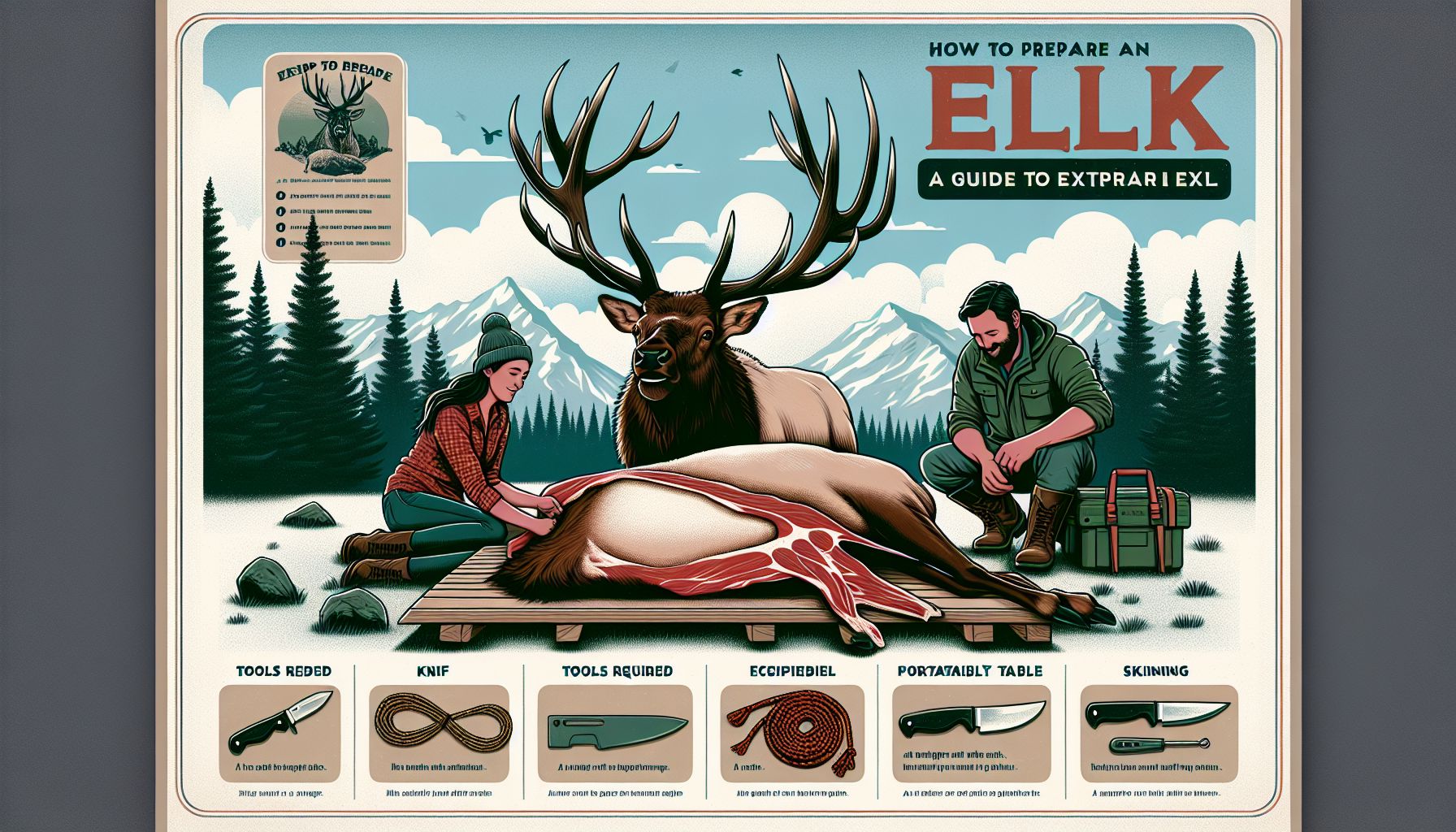
For outdoor enthusiasts, campers, and families who enjoy spending time in the wilderness, learning how to skin an elk can be a valuable skill to have. Not only does it provide you with a source of food, but it also allows you to fully embrace the thrill of the hunt and make the most of your outdoor experience. In this guide, we will walk you through the step-by-step process of skinning an elk, from start to finish.
Introduction
Before you begin the process of skinning an elk, it is important to ensure that you have all the necessary tools on hand. You will need a sharp hunting knife, a bone saw, and a sturdy pair of gloves to protect your hands. Additionally, having a clean workspace and plenty of space to work in is essential.
Body
-
Locate a suitable location: Once you have successfully harvested an elk, the first step in skinning it is to find a flat and level area to work in. This will make the process much easier and more efficient.
-
Secure the elk: Before you can begin skinning the elk, you will need to secure it in place. This can be done by tying its legs together or using a sturdy tree branch to hang it from.
-
Make the initial incision: Using your hunting knife, carefully make a small incision along the belly of the elk. Be sure to cut through the skin and fatty tissue, but avoid puncturing the internal organs.
-
Begin skinning the elk: Once you have made the initial incision, start peeling back the skin from the body of the elk. Use your knife to carefully separate the skin from the meat, working your way towards the legs and head.
-
Remove the skin: As you continue to peel back the skin, you will eventually be able to remove it completely from the elk’s body. Be sure to take your time and work carefully to avoid tearing the skin.
-
Process the meat: Once you have successfully skinned the elk, you can begin processing the meat. Use your bone saw to cut the elk into manageable pieces, which can be used for cooking or preserving.
Conclusion
Learning how to skin an elk is a valuable skill for outdoor enthusiasts, campers, and families who enjoy spending time in the wilderness. By following the steps outlined in this guide, you can make the most of your outdoor experience and fully embrace the thrill of the hunt. So next time you find yourself in the forest, remember to pack your hunting knife and gloves, and get ready to skin an elk like a pro.
In addition to the thrill of the hunt, skinned elk can provide a delicious source of food for you to enjoy. Whether you choose to cook the meat over an open fire or preserve it for later, the possibilities are endless. So why not add skinning an elk to your list of outdoor skills and make the most of your time in the great outdoors.
How to Hunt Turkey for Hikers

As outdoor enthusiasts who enjoy hiking and sourcing our food organically, hunting turkey can be a rewarding experience for hikers looking to elevate their outdoor skills and provide a sustainable source of protein. Turkey hunting requires skill, patience, and knowledge of the terrain and turkey behavior. In this guide, we will provide tips and techniques for hikers looking to hunt turkey in a professional and ethical manner.
Finding the Right Gear
Before setting out on a turkey hunt, it is important to ensure that you have the right gear. A reliable shotgun or bow, camouflage clothing, turkey calls, and decoys are essential tools for a successful hunt. Make sure to practice with your weapon of choice to ensure accuracy and familiarity. Additionally, a good pair of hiking boots and a backpack with water, snacks, and first aid supplies are essential for a safe and comfortable hunting trip.
Scout the Terrain
Like any successful hunt, scouting the terrain is crucial for locating turkey roosts, feeding areas, and travel routes. As a hiker, you likely have experience navigating rough terrain and reading maps. Use these skills to your advantage when scouting for turkey. Look for tracks, feathers, scratching patterns, and droppings to determine turkey activity in the area. Trails, creek beds, and open clearings are prime spots for setting up a blind or calling in turkeys.
Understanding Turkey Behavior
Turkeys are known for their keen eyesight and sharp hearing, making them a challenging game animal to hunt. Understanding turkey behavior is key to a successful hunt. Turkeys are most active in the early morning and late afternoon, so plan your hunt accordingly. Use turkey calls to mimic their vocalizations and attract them towards your position. Be patient and remain still, as turkeys can detect even the slightest movement.
Setting Up for Success
When setting up for a turkey hunt, choose a strategic location where you have clear visibility of the surrounding area. Set up your decoys in a naturalistic manner to draw turkeys closer. Use calls sparingly and listen for responses from nearby turkeys. Stay hidden and avoid making sudden movements that could alert the turkeys to your presence. When a turkey is in range, take your shot carefully and ethically to ensure a clean kill.
Ethical Considerations
Hunting is a privilege that comes with ethical responsibilities. As a hiker hunting for turkey, it is important to practice ethical hunting practices, such as taking only clean shots, respecting wildlife and their habitats, and following all regulations and laws. Be sure to obtain the necessary hunting permits and licenses before embarking on a turkey hunt. Remember that hunting is a way to connect with nature and provide food for yourself in a sustainable and respectful manner.
Conclusion
Hunting turkey as a hiker can be a challenging and rewarding experience that combines outdoor skills with sustainable food sourcing. By finding the right gear, scouting the terrain, understanding turkey behavior, and setting up for success, hikers can increase their chances of a successful hunt. Remember to always practice ethical hunting practices and respect wildlife and their habitats. As hikers who appreciate the outdoors and value organic food sources, hunting turkey can be a fulfilling way to connect with nature and provide for yourself in a responsible way. Happy hunting!
Building a Shelter in the Woods: A Guide for Adventure Seekers
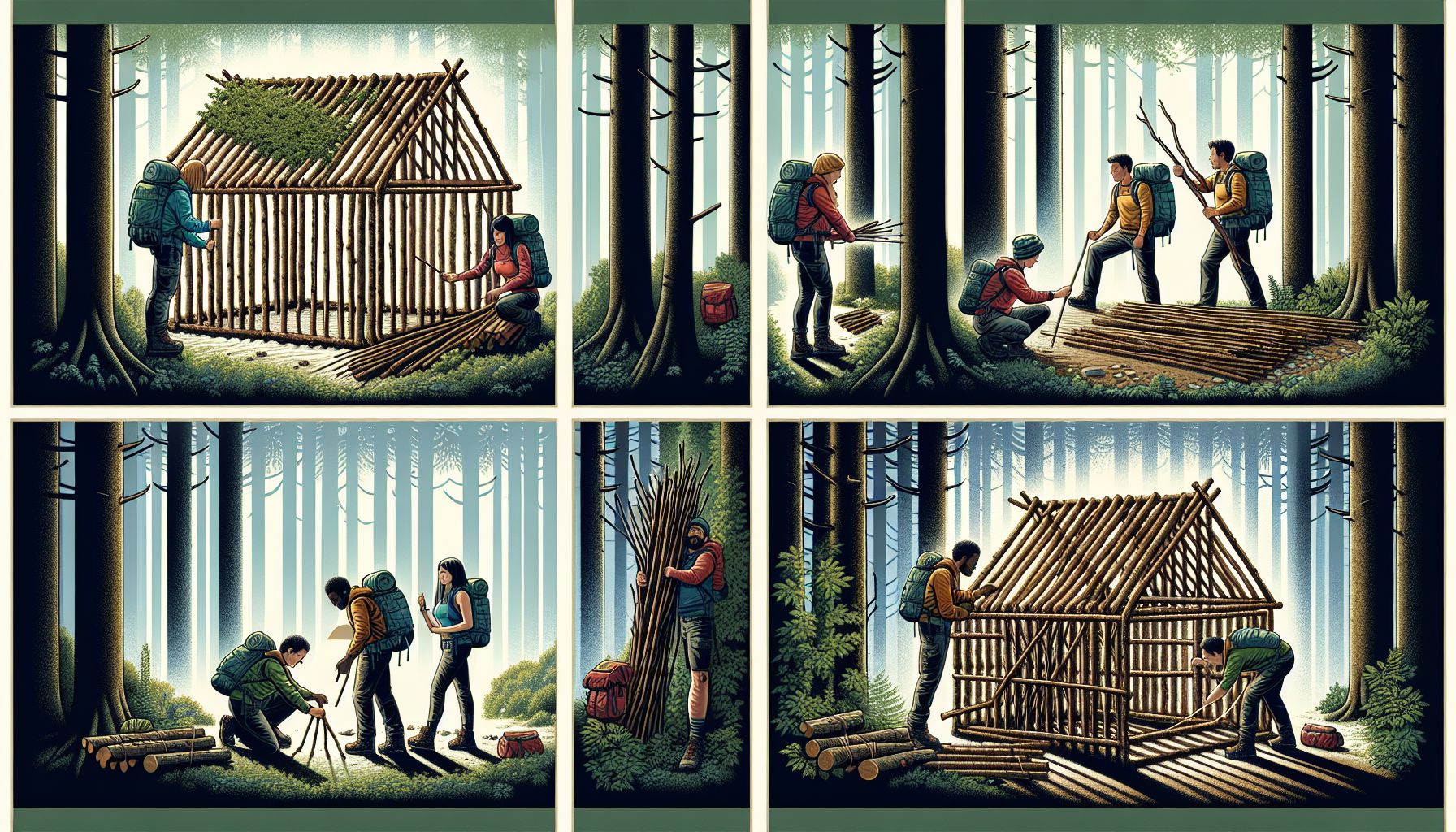
Are you an adventure seeker looking to spend a night under the stars in the great outdoors? Building a shelter in the woods can be a rewarding and fulfilling experience, allowing you to connect with nature in a unique way. Whether you’re hiking through the wilderness or simply looking to escape the hustle and bustle of everyday life, constructing a shelter in the woods can provide a sense of peace and tranquility like no other. In this guide, we’ll walk you through the steps to building a basic shelter in the woods, perfect for your next adventure.
Choosing a Location
The first step in building a shelter in the woods is choosing a suitable location. Look for a flat and level area that is away from any potential hazards such as dead trees or cliffs. You’ll also want to consider the direction of the wind and position your shelter to provide protection from the elements. Additionally, try to find a spot near a water source for easy access to drinking water and for growing food organically if necessary.
Gathering Materials
Once you’ve found a suitable location, it’s time to gather materials for your shelter. Look for fallen branches, sticks, and leaves to use as building materials. You can also use a tarp or a poncho if you have one available. Be mindful of your surroundings and try to use materials that are readily available without causing harm to the environment.
Building the Shelter
Start by creating a frame for your shelter using long branches or sticks. Lean them against a tree or tie them together to create a sturdy structure. Once you have the frame in place, cover it with leaves, branches, and any other available materials to create a waterproof barrier. If you have a tarp or poncho, you can use it as a roof to provide additional protection from the elements.
Adding Finishing Touches
To make your shelter more comfortable, consider adding a layer of leaves or grass on the ground for insulation and padding. You can also create a makeshift bed using branches and leaves to elevate you off the ground. If you plan on staying for an extended period, think about setting up a small cooking area for preparing meals using a portable stove or open fire.
Growing Food Organically
For adventure seekers interested in sustainable living, consider growing food organically near your shelter. You can plant seeds for vegetables or herbs and tend to them during your stay in the woods. This will not only provide you with fresh and nutritious food but also help you connect with the land in a deeper way.
Conclusion
Building a shelter in the woods can be a transformative experience for adventure seekers looking to connect with nature. By choosing a suitable location, gathering materials, and following the steps outlined in this guide, you can create a comfortable and safe shelter for your next outdoor adventure. Remember to respect the environment and leave no trace behind as you explore the beauty of the great outdoors. Happy building!
How to Skin an Elk: A Guide for Outdoor Enthusiasts
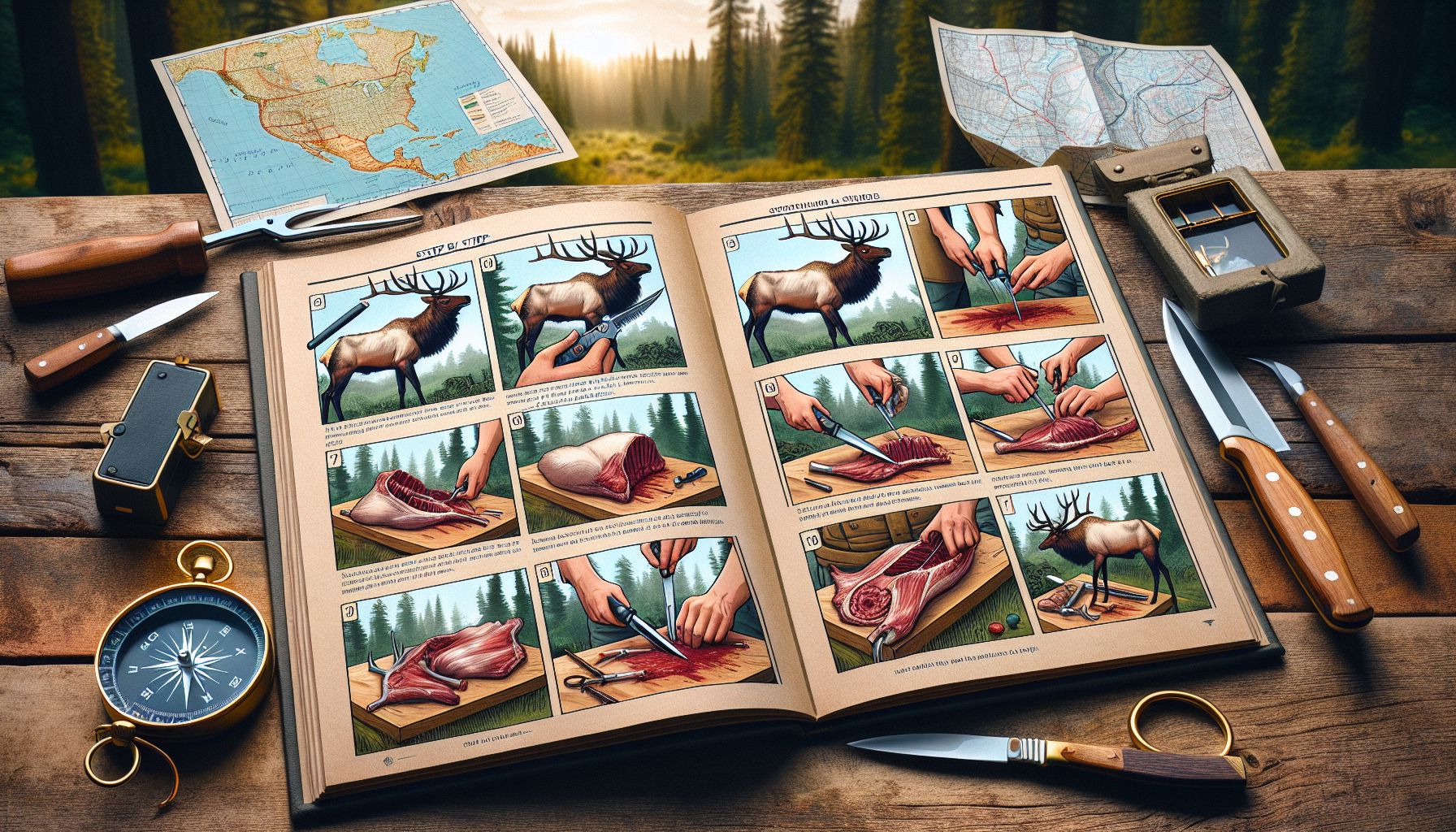
Skinning an elk is an essential skill for any outdoor enthusiast, camper, or family looking to source their own food in a sustainable and organic way. Not only does it allow you to harvest high-quality meat, but it also connects you more deeply with the natural world around you. In this guide, we will walk you through the step-by-step process of skinning an elk so that you can make the most of your hunting adventures.
Preparation
Before you begin the skinning process, it is important to gather the necessary tools. You will need a sharp knife, a bone saw, a skinning gambrel, and a sturdy work surface. Make sure that your tools are clean and in good working condition before starting.
Skinning
-
Hang the Elk: The first step in skinning an elk is to hang the animal from a sturdy tree branch or hook using a skinning gambrel. Make sure the elk is secure before proceeding.
-
Make the Initial Incision: Using your sharp knife, make an incision along the belly of the elk from the throat to the tail. Be careful not to puncture the internal organs as you cut through the skin.
-
Peel Back the Skin: Starting at the incision, carefully peel back the skin using your hands and the knife as needed. Take your time to avoid tearing the hide.
-
Remove the Hides: Once the skin is peeled back, use the bone saw to cut through the joints and remove the legs, head, and hide from the carcass. Be sure to save the hide if you plan on tanning it later.
-
Trim the Meat: With the elk now skinned, you can trim the meat from the carcass for processing. Take care to remove any excess fat, sinew, or connective tissue as you go.
-
Dispose of Waste: Finally, dispose of any remaining waste in a responsible manner, taking care not to leave a mess in the wilderness.
Conclusion
Skinning an elk is a challenging but rewarding task that can provide you with high-quality organic meat for your outdoor adventures. By following this guide, you can learn how to skin an elk in a professional and efficient manner, allowing you to make the most of your hunting experiences. Remember to always respect the animals you harvest and the environment in which you hunt, and enjoy the fruits of your labor in the form of delicious, sustainably sourced elk meat.
Happy hunting!
Surviving in the Wild: How to Catch Fish in the River

As a survivalist, being able to catch your own food is a crucial skill that can mean the difference between thriving and barely surviving in the wilderness. Fish are a great source of protein and nutrients, and rivers are often teeming with them. In this article, we will discuss some techniques for catching fish in the river to help you sustain yourself in the wild.
Introduction:
Imagine finding yourself lost in the wilderness with little food and water supplies. You may have some basic survival gear with you, but it may not be enough to sustain you for long. In such situations, knowing how to catch fish in the river can be a lifesaver. Fish are abundant in rivers and can provide you with a much-needed source of food.
Body:
-
Finding the Right Spot – The first step in catching fish in the river is to find the right spot. Look for areas where the water is moving slowly, such as bends in the river or behind rocks. Fish tend to gather in these calmer waters as it requires less energy for them to swim.
-
Making a Fishing Rod – If you have some basic materials with you, you can fashion a makeshift fishing rod. A long stick or branch can serve as the rod, while you can use a piece of string or even shoelaces as the fishing line. Attach a hook to the end of the line and bait it with insects or small pieces of food.
-
Using a Spear – If you don’t have a fishing rod, you can try your hand at spearfishing. Look for fish swimming near the surface of the water and use a sharpened stick or a homemade spear to catch them. This method requires more skill and precision but can be very effective.
-
Building a Fish Trap – Another method for catching fish in the river is to build a fish trap. You can fashion a trap out of materials such as branches, vines, and rocks to create a barrier for the fish. Leave an opening for the fish to swim in, but make it difficult for them to find their way out.
-
Patience and Observation – Regardless of the method you choose, catching fish in the river requires patience and observation. Take the time to watch the fish and understand their behavior. This will help you determine the best approach to catch them effectively.
Conclusion:
Catching fish in the river can be a rewarding and essential skill for survivalists in the wild. By mastering the techniques mentioned above and honing your fishing skills, you can ensure a sustainable source of food to sustain yourself in the wilderness. Remember to always respect nature and practice responsible fishing practices to ensure the health and longevity of the river ecosystem.
So next time you find yourself lost in the wilderness, don’t panic. Instead, head to the nearest river and try your hand at catching fish. With patience, skill, and a little bit of luck, you may just catch yourself a delicious meal that will keep you going as you navigate the challenges of surviving outdoors.